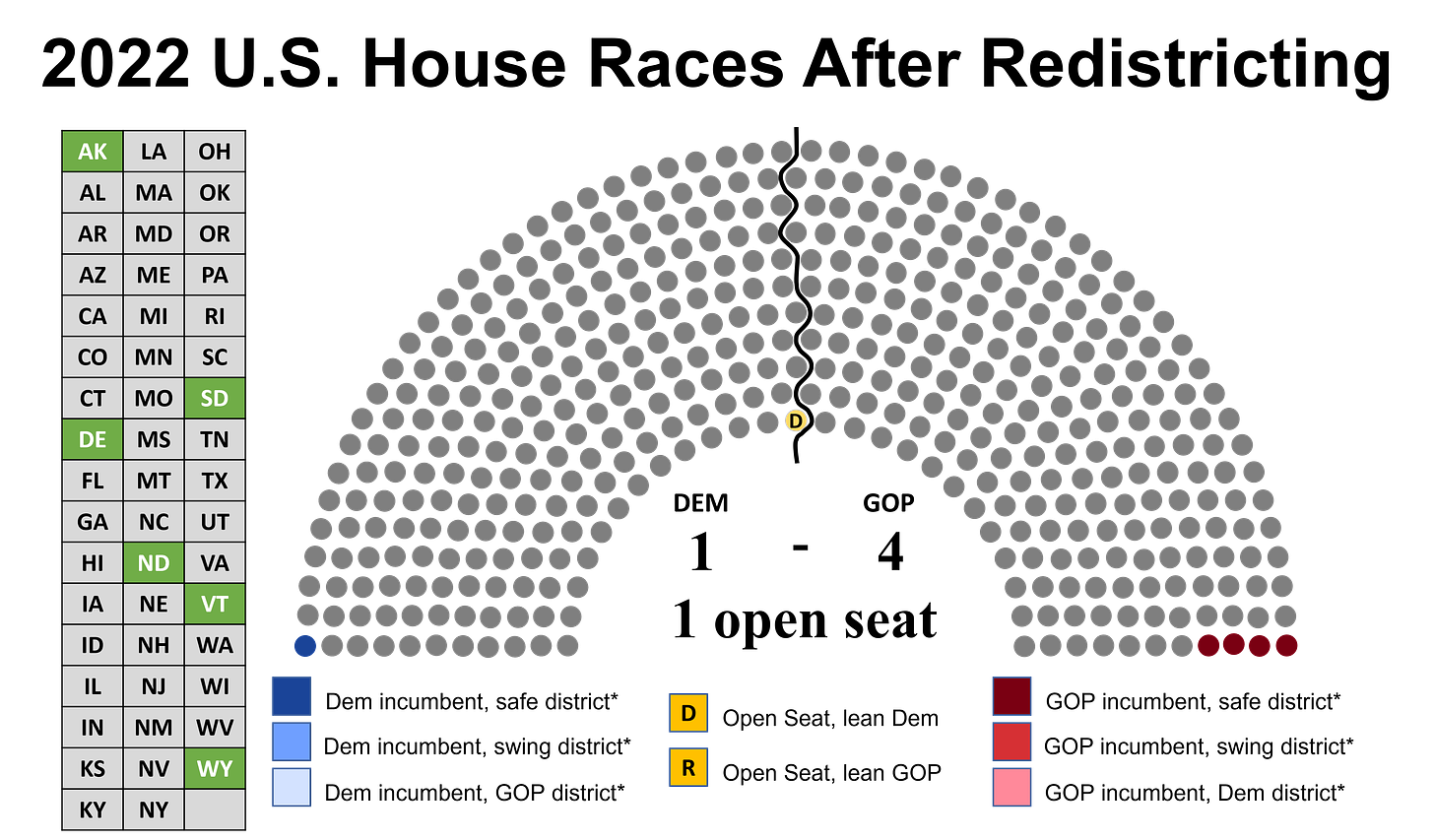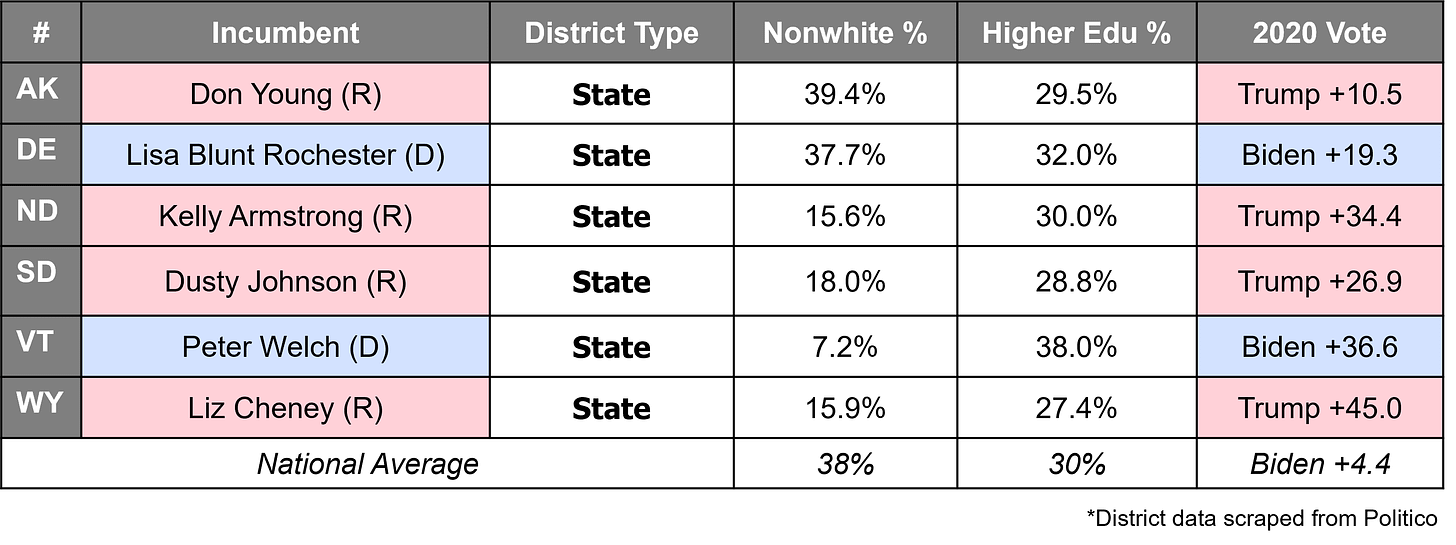
Following the 2020 census, six states have populations low enough where only one House representative is allocated in the reapportionment process. These six states are Alaska, Delaware, North Dakota, South Dakota, Vermont and Wyoming. (In the last round of redistricting in 2010, the list was comprised of seven states. Montana saw enough growth in the last decade to warrant a second seat.) Since the congressional districts for these states are at-large districts, there’s no need to draw new maps or debate new boundaries. Instead, we’ll embark on a brief review of how the populations of these states have changed over the last decade.
Alaska
The 2020 census found that Alaska’s population only grew by 3.6% percent in the last decade. That’s an additional 26,000 residents, bringing its total population to 736,081. Since 1973, Republican Don Young has represented Alaska’s at-large district in the House. He stands as the longest serving Republican House representative and has already announced his 2022 reelection campaign. A crucial part of his appeal is his willingness to go against party leadership, as he did when rejecting Donald Trump’s plea to oppose Biden’s infrastructure package.
Delaware
Delaware’s population increased by nearly 100,000 residents over the last decade and sits just under the 1 million mark at 989,948 residents. While this increase was not large enough to warrant a second House seat, Delaware is likely next in line as Montana holds barely 100,000 more residents than Delaware. Until then, the state is likely to remain in Democratic hands as no Republican has won a statewide election since 2008.
North Dakota
North Dakota has a checkered history with congressional districts, once holding as many as three seats between the 1910 and 1930 Censuses. It was following the 1970 census that the state reverted back to holding a single district. The 2020 census found that North Dakota’s population currently sits at 779,094 residents. Despite the fact that this is the largest percentage increase in population for any state in the nation (15.83%) it wasn’t enough to garner a second seat in the US House. While the state was represented by Democrats in the House for nearly 30 years, Republicans captured the seat in 2010 and have won by double digits ever since.
South Dakota
The 2020 census found that South Dakota’s population sat at 886,667 residents, an 8% increase from the 2010 census. Much like North Dakota, South Dakota’s house seat flipped to the Republican party in 2010 and has stayed red in every election since. (Democrats didn’t even field a candidate here in 2020, resulting in the Republican incumbent nabbing 80% of the vote over his Libertarian challenger.)
Vermont
The 2020 presidential election’s bluest state in the nation saw its population increase only 2.8% to 643,077. This makes the state (along with Wyoming) one of only two states with a smaller population than the District of Columbia. Bernie Sanders held this House seat for 16 years before it was taken over by the current incumbent Democrat Peter Welch in 2007.
UPDATE 1/20/22: Peter Welch has announced his candidacy to represent Vermont in the US Senate after Sen. Patrick Leahy (D-VT) announced his retirement. The open seat is expected to be filled by woman as no male Democratic candidates have filed to campaign for the seat. (Democrats hope to break the state’s streak as the only state in the nation to have never been represented by a woman in Congress.)
Wyoming
Wyoming remains the least populous state in the nation with only 576,851 residents following the 2020 census, only amounting to a 2% increase in population. The state was the reddest state in the nation when judged by its 2020 presidential vote and hasn’t been represented by a Democrat in the House since 1978. Despite the state’s clear partisan lean, all eyes are on its upcoming election as the state Republican party has turned its back on incumbent Liz Cheney. A long slate of challengers have lined up to face her in the primary with Donald Trump forcefully pushing his own candidate to oust Cheney.
Leftover Links
Find out why Democrats failed to qualify their candidate for South Dakota’s House seat in the 2020 elections.
If re-elected in 2022, Don Young will become the oldest sitting House representative in history at the end of his term, tying the previous record set by Ralph Hall of Texas in 2015.
See where Liz Cheney stands eight months away from the August 2022 primary and nearly a year out from the general election.



